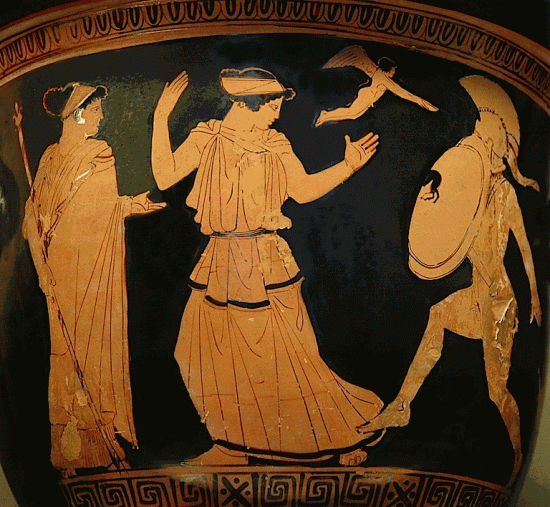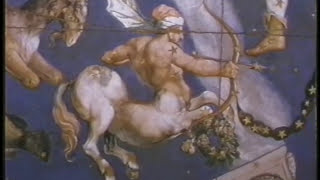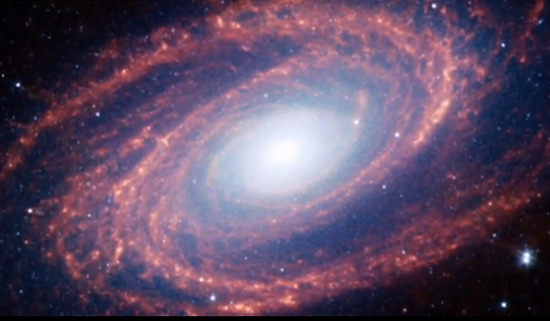Sep 16, 2013
Part 1 “The Iliad”
The Trojan War began with the abduction of the tantalizing Helen by the handsome Paris. Our saga begins in the shattered, burning ruins of a once glorious Troy. A Troy devastated by Zeus’s incredible cosmic thunderbolts, flattened by Poseidon’s earthquakes and floods, and burned by Apollo’s heavenly fire and deadly plagues. A Troy that was part of a Mycenaean Age Mediterranean basin that repeatedly suffered relentless war, devastating plague, drought, famine and abandonment. In brief we are to follow in French archaeologist Claude Schaeffer’s pioneering footsteps and reinterpret the ancient Trojan War from an Electric Universe paradigm.
Schaeffer’s work confirmed that a series of ancient cataclysmic crises on a continental scale took place three to five thousand years ago. In his examination of numerous Middle Eastern sites, he found violent earthquakes had shaken the entire ancient Middle East, from Troy at the Dardanelles (Turkey), to Russia, Iran and Egypt at least six times! The stratigraphy was stark; separated by up to ten meters of ash!
Those civilizations were suddenly terminated. Traffic, commerce, and pursuit of the arts ceased, and populations of all countries were decimated. The survivors became vagrants and pirates with plagues and famine taking their devastating toll! Incredibly dramatic climate change paralleled that event. It has recently been confirmed by Yale’s Harvey Weiss in the “Tell Leilan” project. In one instance he cites three hundred years of drought followed by massive continent wide flooding. Earthquakes, tsunamis, climatic changes and other natural catastrophic agents wreaked havoc on a scale unseen in modern times. They moulded, reshaped and destroyed thriving civilizations. Schaeffer’s famous conclusion was very unfashionable at the time but he has since been totally vindicated: “Those great crises will explain better than before, the historical development of the most ancient civilizations and its mechanism, and they will definitely take out of the hands of man the command of the great historical happenings we thought he possessed.”
Yet, he puzzled over the causative agent. What evoked those earthquakes and floods? As puzzling, he observed they were ten times more powerful than any observed in recent times? We will try to solve this mystery.
From an historical perspective, Homer’s Iliad describes the highly civilized Mycenaean Greeks with their fabulous Cyclopean cities, flourishing civilization and sophisticated collection of proud ships. They were arrayed against the formidable King Priam with his powerful capitol Troy, dominating what is today’s Turkish entrance to the Bosporus Sea. That strategic headland is the same scene as the First World War’s Gallipoli debacle.
In warlike mode, those two kingdoms battled for ten years while around them a huge cosmic battle raged in the heavens. In their fear they pleaded to the battling sky gods for divine intervention, and intervene they did with devastating results. The Greek leader Agamemnon even sacrificed his daughter, Iphigenia, in the belief he could control the feisty heavenly host.
The sky gods Ares, Zeus, Apollo, Athena and Aphrodite seemed to take sides with either the Greeks or Trojans in that chaotic celestial drama. In the end Troy was laid waste and abandoned not by warlords but primarily by the forces of nature. More than once Troy was devastated by fire, earthquakes, storms and floods! The Trojan War was but one episode. Quoting Homer from the Iliad: “Zeus lashes the ground.” “A meteor that is discharged from Zeus.” “Zeus bought down high towers and will destroy others.” “Zeus destroyer of cities.” “Zeus sent a flash of lightning amongst the troops.” “Apollo of the deadly plague.” “Apollo – nine days the god’s arrows rained.” “Athena sacker of towns.” “Murderous Ares, butcher of men sacker of towns.”
From an Electric Universe perspective, those descriptions seem to portray plasma discharge events as described by Anthony Peratt in his scaled down plasma laboratory experiments.
As an example, Zeus’s thunderbolt parallels a classic laboratory instability. Peratt’s contention was, that in earlier world episodes, “plasma instabilities” had been witnessed by mankind. Discharges generating X-rays, synchrotron radiation, plasmoids, local magnetic reversals and a host of geophysical, weather and radiation effects would have led to serious repercussions for mankind. Allusions to cosmic thunderbolts, darts, meteorites and discharges between heavenly bodies clearly demonstrate unstable plasma discharge events.
Wal Thornhill’s contention that earthquakes and resultant tsunamis are also electrical events resulting from underground telluric current discharges is equally supportive of the theory. My contention is that plague, famine and war were part of that electromagnetic drama. In some way a new chaotic electromagnetic paradigm causes them! Mythology supports this in many ways. An example is supported by Homer, citing Apollo as, “He of the deadly plague.”
Can we prove that the planets of that era were in flare mode and unpredictably readjusting to a new harmonic? Perhaps those events could be ascribed to comets, coronal mass ejections or other cosmic effects to which we are no longer witness?
Bluntly, we don’t know absolutely, but the clarity of the mythology and history as written by Homer, Herodotus, Hesiod and Strabo, to name only a few is stark! Ongoing catastrophic events were occurring over an extended period of time. Modern scholars such as Schaeffer, Amos Nur, Harvey Weiss, Marie Agnes Courty and many others have verified those inexplicable catastrophic events. The Electric Universe model can now shed light on the cause!
So, lest we accept most modern historians claim that the Trojan War was merely myth or an exaggerated picture full of symbolism, let’s examine the written historical evidence that has continued to puzzle archaeologists.
Thucydides’ “Peloponnesian Wars” tells of a period of political chaos and economic deprivation after the fall of Troy. Homer’s other epic the “Odyssey” relates to the “aftermath of this war” (to be described in part 2). That dizzy period was a time of wandering, migration and confusion amongst humanity! In a matter of hardly half a generation, a curtain descended on the Mediterranean basin. Ethiopians, Phrygians, Cimmerians, Lydians, Scythians, Ionians, Carians and Amazons wandered the Mediterranean as lost tribes.
Strabo cited Democles,“who recalls certain great earthquakes some of which long ago took place about Lydia and Ionia as far north as the Troad, and by their action not only were villages swallowed up, but Mount Sipylus was shattered, in the reign of Tantalus. And lakes arose from swamps, and a tidal wave submerged the Troad.”
The puzzled archaeologist, Rhys Carpenter, summed-up his research nicely: “Despite the fact that there is no indication that the late Mycenaean’s were driven out by any human intervention, they abandoned the south Aegean islands even as they deserted the central Peloponnese. For some reason and for some cause over which they had no control they found life in Greece and in the southern Aegean so unendurable that they could not remain. What caused them to evacuate their towns and villages. Was it a pestilence or a famine, was it a change of climate?”
Does the answer lie in deadly synchrotron radiation from a Peratt instability? In part 2, “The Odyssey,” we will examine that strange era with its curious brain affecting electromagnetic sequel.
Peter Mungo Jupp
FREE full length video of this episode exclusively for Thunderbolts Picture of the Day readers. Click on the link below and enter the password walisgod.
http://www.mungoflix.com/mungoflix/free-video-troy-iliad-ep1-d17/













